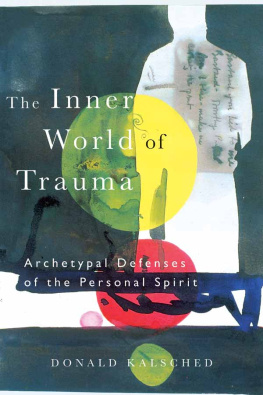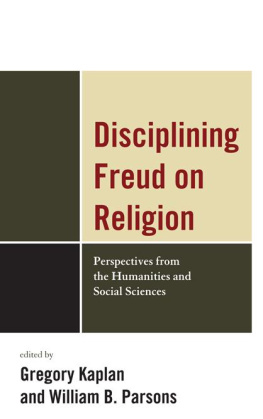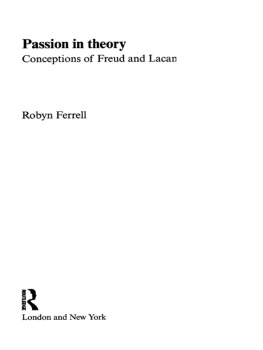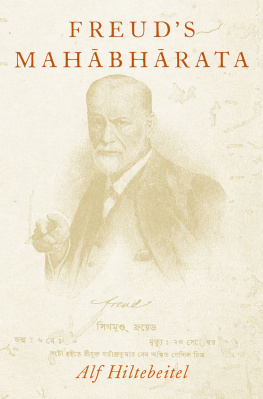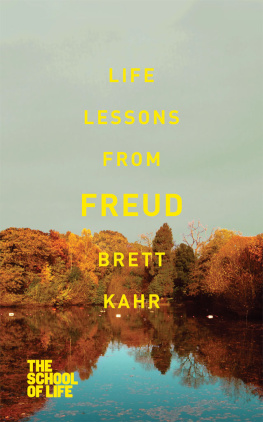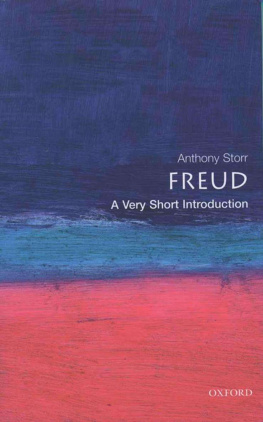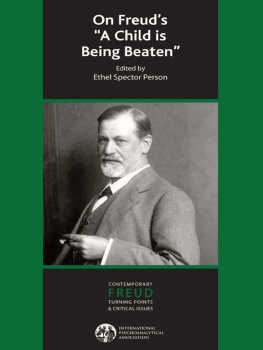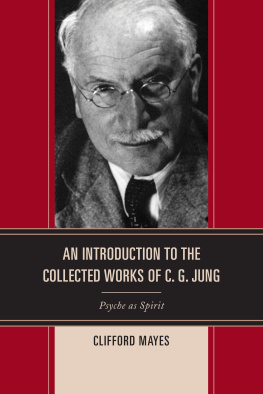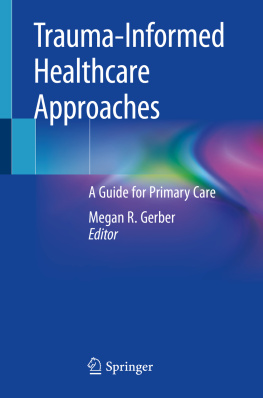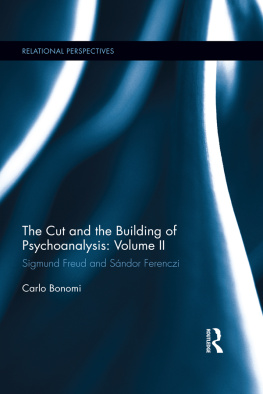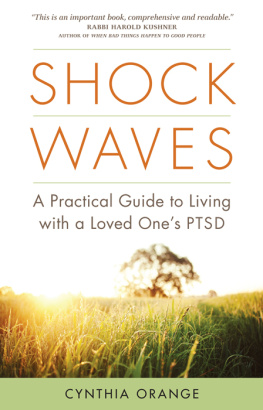THE INNER WORLD OF TRAUMA
One of the most outstanding and important contributions to the practice of Jungian analysis (and psychoanalysis altogether) that I have encountered in the last few years.
Mario Jacoby, C. G. Jung Institute, Switzerland
The rediscovery of childhood physical and sexual abuse has again revived psychiatric interest in disorders which arise from traumatic experience. In The Inner World of Trauma Donald Kalsched explores the interior world of dream and fantasy images encountered in therapy with people who have suffered unbearable life experiences. In order to examine the inner world, the author focuses on certain archaic and typical dream-images which occur in response to critical moments in therapy. He shows how, in an ironical twist of psychical life, the very images which are generated to defend the self can become malevolent and destructive, resulting in further trauma for the person. Why and how this happens are the questions the book sets out to answer.
Drawing on detailed clinical material, the author gives special attention to the problems of addiction and psychosomatic disorder, as well as the broad topic of dissociation and its treatment. Donald Kalsched here brings together Jung's views on trauma and redefines classical interpretations of Jungian theories. By focusing on the archaic defenses of the self and the mythopoetic language of dream and fairy tale, he connects Jungian theory and practice with contemporary object relations theory and dissociation theory. At the same time, he shows how a Jungian understanding of the universal images of myth and folklore can illuminate treatment of the traumatized patient.
Trauma is about the rupture of those developmental transitions that make life worth living. Donald Kalsched sees this as a spiritual problem as well as a psychological one, and in The Inner World of Trauma he provides a compelling insight into how an inner self-care system tries to save the personal spirit.
Donald Kalsched is an analyst in private practice and a teaching member of the C. G. Jung Institute, New York.
THE INNER WORLD OF TRAUMA
Archetypal Defenses of the Personal Spirit
Donald Kalsched
First published 1996
by Routledge
27 Church Road, Hove, East Sussex BN3 2FA
Sirnul taneousl y published in the USA and Canada
by Routledge
711 Third Avenue, New York NY 10017
Routledge is an imprint of the Taylor & Francis Group, an Informa business
1996 Donald Kalsched
Typeset in Times by
PontingGreen Publishing Services, Chesham, Bucks
All rights reserved. No part of this book may be reprinted or reproduced or utilized in any form or by any electronic, mechanical, or other means, now known or hereafter invented, including photocopying and recording, or in any information storage or retrieval system, without permission in writing from the publishers.
This publication has been produced with paper manufactured to strict enviromnental standards and with pulp derived from sustainable forests.
British Library Cataloguing in Publication Data
A catalogue record for this book is available from the British Library
Library of Congress Cataloging in Publication Data
Kalsched, Donald,
The inner world of trauma: archetypal defenses of the personal spirit / Donald Kalsched.
p. cm.
Includes bibliographical references and index.
1. Psychic trauma. 2. Psychic traumaCase studies. 3. Defense mechanisms (Psychology). 4. Dreams. 5. Jungian psychology. 6. Freud, Sigrnund, 18561939 I. Title.
BF175.5.P75K35 1997
616.8521dc20 9613507
CIP
ISBN 9780415123297 (pbk)
To Robin
CONTENTS
Many people have suffered through with me the ever-shifting kaleidoscope of ideas which take shape in the following pages none more intimately or helpfully than my patients themselves, especially those individuals whose curiosity matched my own about the angelic/daimonic presences appearing on the stage of dreams. I wish especially to thank those of my patients who have kindly given me permission to use dreams and other aspects of their therapy process. All the clinical material described in the book is based on actual cases, but identifying-details and certain other aspects of the therapeutic context have been changed in order to preserve confidentiality. In a few instances I have fictionalized the data by creating an amalgam of material from more than one patient.
In addition to my patients, I am also especially grateful to the faculty, staff, and participants of the Professional Enrichment Program in Jungian Theory and Practice, a study community for professionals sponsored from 1988 through 1995 by the Center for Depth Psychology and Jungian Studies in Katonah, New York. Within this group I owe special thanks to my co-director Sidney Mackenzie, who helped so ably to create the kind of enabling space that makes intellectual work a pleasure, and to other members of the core faculty, El Mattern, Alton Wasson, Loren Stell, and Robin van Loben Sels, for their patience and encouragement over the many years during which my ideas were gestating and reaching the surface of our study group in one form or another.
It remains for me to express my gratitude to Mario Jacoby of the C. G. Jung Institute in Zurich for his encouragement of my ideas, to David Stonestreet at Routledge for his enthusiastic response to a preliminary proposal for the book, and to Edwina Welham, Commissioning Editor, without whose openness and flexibility this project would have never been completed. Finally, my deepest thanks are to my wife Robin for her understanding and support, even during the many lost weekends that were taken up in the various stages of writing and editing the final manuscript.
This is a book about the inner world of trauma as it has been revealed to me in the dreams, fantasies, and interpersonal struggles of patients involved in the psychoanalytic process. By focusing on the inner world of trauma I hope to illustrate how the psyche responds inwardly to overwhelming life events. What happens in the inner world, for example, when life in the outer world becomes unbearable? What do dreams tell us about the inner object-images of the psyche? And how do these inner objects compensate for the catastrophic experience with outer objects? What patterns of unconscious fantasy provide an inner meaning to the trauma victim when life-shattering events destroy outer meaning altogether? Finally, what do these inner images and fantasy structures tell us about the miraculous life-saving defenses that assure the survival of the human spirit when it is threatened by the annihilating blow of trauma? These are some of the questions I will attempt to answer in the following pages.
Throughout the discussion that follows, I will be using the word trauma to mean any experience that causes the child unbearable psychic pain or anxiety. For an experience to be unbearable means that it overwhelms the usual defensive measures which Freud (1920b: 27) described as a protective shield against stimuli. Trauma of this magnitude varies from the acute, shattering experiences of child abuse so prominent in the literature today to the more cumulative traumas of unmet dependency-needs that mount up to devastating effect in some children's development (Khan, 1963), including the more acute deprivations of infancy described by Winnicott as primitive agonies, the experience of which is unthinkable (1963: 90). The distinguishing feature of such trauma is what Heinz Kohut (1977: 104) called disintegration anxiety, an unnameable dread associated with the threatened dissolution of a coherent self.

